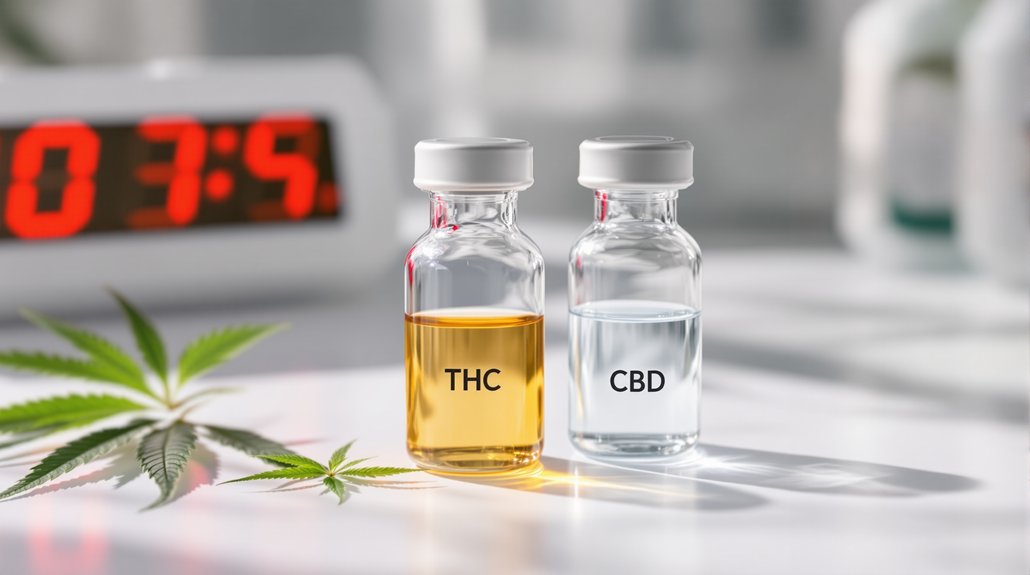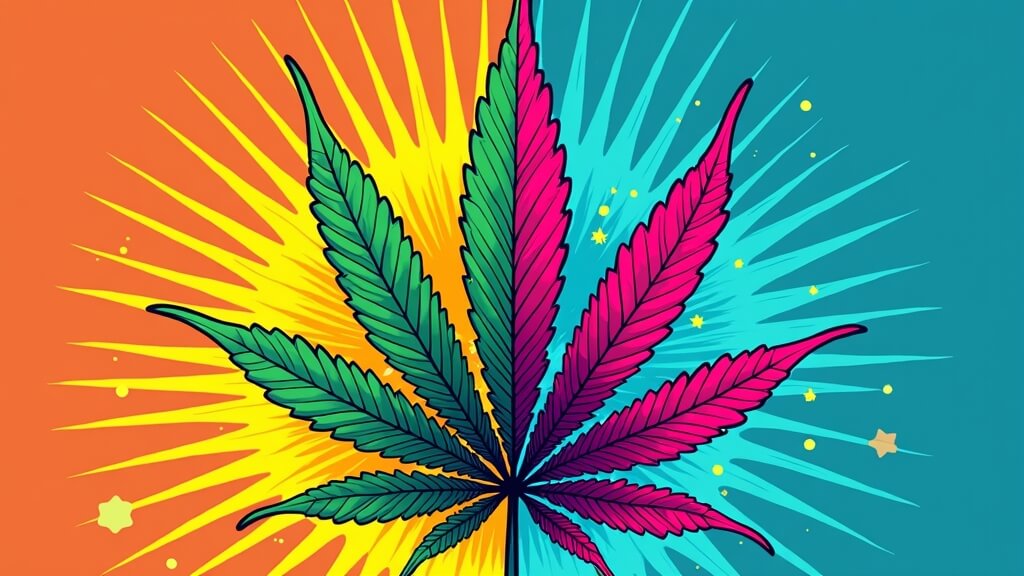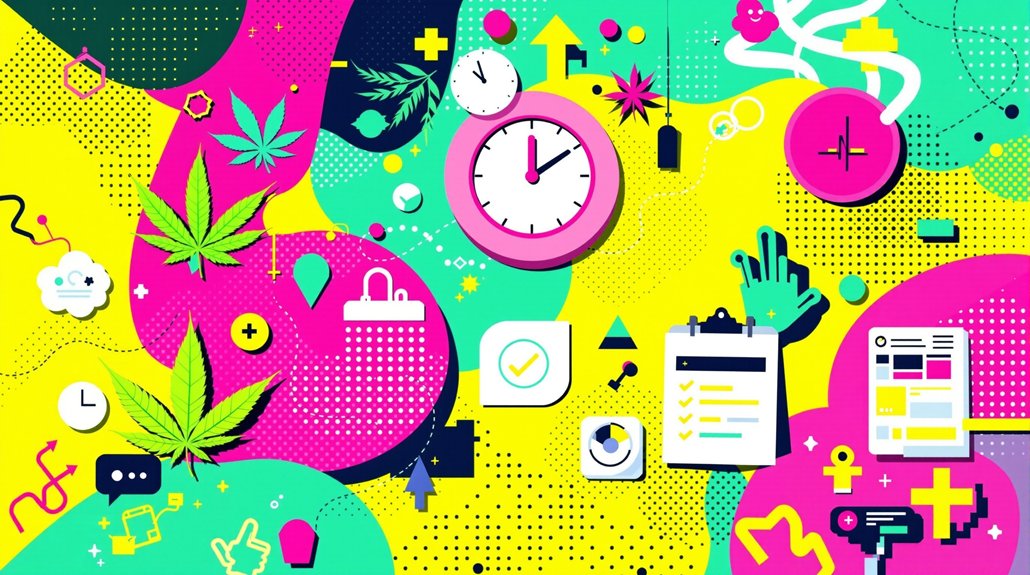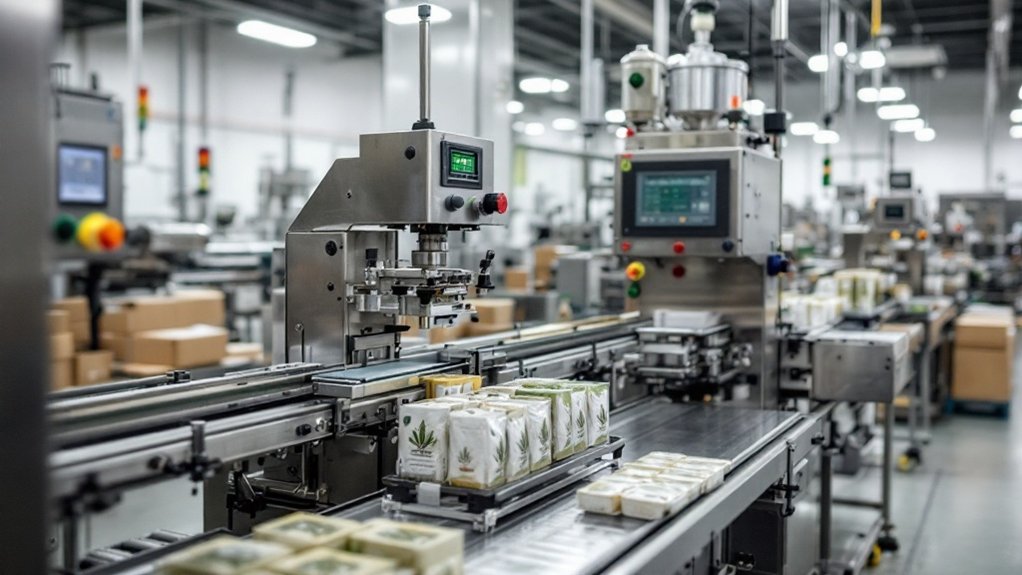Cannabis consumers face a fundamental choice that extends far beyond recreational preferences. THC delivers the signature euphoric experience through direct brain receptor activation, while CBD operates as a therapeutic workhorse without any psychoactive effects. These compounds target entirely different biological pathways, producing distinct medical applications and legal classifications. One triggers cognitive impairment alongside its benefits. The other enhances mental clarity while helping symptoms of chronic pain. Understanding these mechanisms reveals why regulatory agencies treat them as separate substances entirely and why that distinction matters more than most realize.
The Science Behind the High: How THC and CBD Affect Your Brain

How exactly do THC and CBD create such dramatically different experiences when they come from the same plant? The answer lies in their opposing dance with brain receptors.
THC triggers dopamine release in the brain’s reward pathway. This creates the signature high while impairing short-term memory and attention.
CBD takes a different approach entirely. It has low affinity for these same receptors, often working indirectly to counteract THC’s psychoactive punch. Unlike THC, raw cannabis contains non-psychoactive THCA compounds that require heat to convert to psychoactive THC.
Brain imaging reveals their stark differences. During cognitive tasks, THC typically decreases activity in regions controlling memory and emotion, while CBD increases or stabilizes it. Recent neuroimaging studies show that CBD enhances fronto-striatal connectivity during resting states compared to both placebo and THC.
Think of them as neurological opposites, THC heightens anxiety and fear responses, while CBD reduces them, even blocking THC-induced psychotic symptoms in controlled studies. Research involving 15 healthy men performing various cognitive tasks demonstrated these opposite effects across multiple brain regions including the hippocampus and amygdala.
From Pain Relief to Epilepsy: Medical Applications That Actually Work
While recreational users debate the merits of different strains, medical researchers have been quietly building an impressive body of evidence for cannabis-based treatments that actually move the needle on serious health conditions.
CBD has emerged as the star performer in epilepsy treatment, with FDA-approved Epidiolex cutting seizure frequency in half for children with treatment-resistant conditions like Dravet syndrome. Research shows that chronic use of CBD at high doses up to 1500 mg daily is well tolerated in humans.
Pain management represents another breakthrough area. Cannabinoids greatly reduce chronic neuropathic pain while helping patients decrease opioid dependency without additional adverse effects. In Mexico, patients must obtain special permits from COFEPRIS to legally access medical cannabis treatments for pain conditions.
Cancer patients benefit from symptom control through different formulations like oral, topical, and vaporized options to address pain, nausea, and appetite loss. Studies show that 70%-90% of patients report improvements when using cannabis for cancer symptoms.
Early-stage research into anti-inflammatory applications shows promise for autoimmune disorders, though researchers acknowledge substantial knowledge gaps remain in understanding precise therapeutic mechanisms.
Side Effects Showdown: What to Expect From Each Compound
Despite their therapeutic promise, both THC and CBD carry distinct side effect profiles that users and medical professionals must navigate carefully.
THC delivers the heavier punch, triggering cognitive impairment, coordination issues, and increased heart rate alongside its signature psychoactive high. Memory problems and slower response times make driving a no-go.
THC packs a powerful punch, impairing cognition and coordination while elevating heart rate, making activities like driving dangerously compromised.
CBD plays gentler but still demands respect, causing potential gastrointestinal distress, drowsiness, and occasional mood changes in sensitive users. Research indicates CBD may alter calcium levels in brain cells, potentially contributing to these neurological effects. Importantly, neither compound is fatal when taken correctly according to current medical understanding.
Long-term risks diverge sharply between compounds. THC poses genuine concerns for adolescents, potentially triggering psychosis in vulnerable individuals and carrying modest addiction potential. Unlike THC, its precursor THCA exists in a non-intoxicating form until exposed to heat through decarboxylation.
CBD’s main hazards involve drug interactions and unregulated product contamination rather than dependency issues. The dose makes the difference for both compounds, though THC’s psychiatric risks escalate more dramatically at higher levels than CBD’s relatively mild effects.
Beyond the medical considerations and side effect profiles lies a labyrinthine legal framework that transforms cannabis from medicine to contraband with a simple border crossing.
THC and CBD face drastically different regulatory treatment worldwide. Germany recently joined Canada, Uruguay, and Mexico in full recreational legalization, while over 24 U.S. states permit recreational use.
Medical cannabis typically requires prescriptions. Hemp-derived CBD products enjoy broader acceptance, with countries like Poland allowing products under 0.3% THC.
International treaties complicate matters further, forcing countries to balance reform with UN drug control obligations. The UN High Commissioner for Human Rights now advocates for regulatory frameworks that prioritize public health over punitive enforcement measures. What’s perfectly legal in Amsterdam becomes a deportable offense just kilometers away. Thailand has emerged as Asia’s cannabis pioneer, creating new economic opportunities while maintaining severe penalties for violations.
Drug Testing Reality: What Shows Up and When

When individuals consume cannabis products, their bodies become unwitting record-keepers, storing chemical evidence that modern drug tests can detect weeks or even months later.
The human body silently chronicles every cannabis encounter, creating an invisible timeline that drug testing technology can effortlessly decode.
THC metabolites linger in urine for 3-30 days depending on usage frequency, while hair follicles maintain a 90-day chemical diary. Blood tests offer the shortest detection window at just hours, making them better for evaluating current impairment.
CBD users face fewer testing concerns. Standard workplace screens target THC metabolites, not CBD compounds. Pure CBD isolates rarely trigger positive results.
However, full-spectrum products containing trace THC amounts can cause unexpected failures.
Usage patterns dramatically influence detection windows. First-time users typically clear THC within three days, while daily consumers may test positive for a month or longer. Chronic users face extended detection periods because THC accumulates in fatty tissues over time.
Saliva tests detect recent use within hours but fade quickly. Oral fluid testing shows all specimens remain THC-positive for up to 13.5 hours after smoking cannabis.
Blood tests can detect active impairment with high accuracy and virtually no false positives, making them more reliable than other testing methods for determining recent use.










